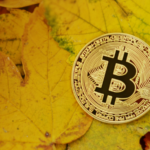Decentralized finance (DeFi) services (such as loans or loans) are apparently the same as centralized ones provided through banks or other financial institutions. The difference is that these services are accessible to anyone, as long as they have an Internet connection.
They are also not controlled by central authorities who can freeze or affect your relationships. Through DeFi services you can earn interest on your crypto holdings, lend, borrow, trade, and more.
Why so many hacks?
Cryptocurrency and DeFi are two fast-moving industries, made with competition. For this reason, many teams of developers rush to release products and be the first on the market. These products can be anything from a full-fledged DEX to a performance optimizer. The problem with the rush to release products to gain market share is that you often miss something.
In the physical world, this is seen in product defects such as a doll without a button on its shirt, or something like bacteria in Roman products. The consequences in these physical situations of the product are often not very great. The product is recalled, consumers can return their product for a refund, and the point of sale is refunded by the manufacturer with a new and not defective stock or a refund.
With DeFi services, the consequences are much greater. Rather than a missing button, there is instead a wrong line of code or error within the code that hackers can exploit. They can then steal millions of dollars in cryptocurrencies, but unlike the example seen with a faulty doll, there is rarely any refund for the consumer. Instead, they are left with a worthless asset or loss of goods. The permanent nature of blockchain transactions means that there is no way to be compensated unless the hacker decides to return the funds, which happens more often than you might expect.
Even when a DeFi product code is checked, it is no guarantee of security. Auditors aren’t perfect, and hackers are smart at finding little things to exploit. For those watching from the outside, they may wonder why anyone would even risk a hack, or if DeFi is also a safe thing to participate in.
Is DeFi safe?
Despite all the hacks in DeFi’s history, it’s still pretty safe to participate in them, though the caveat is that you need to do research and be prepared for something that goes wrong. The first part, research, is something you should do anyway. Look into a product before putting your money into their protocol, see if they have done audits (as this is still important although no guarantee of security), how long it has been in development, and how it works. Research first can, at the very least, help you avoid putting money into a protocol that is a carpet scheme or Ponzi.
Being prepared for something that goes wrong doesn’t mean assuming it will; many DeFi projects have been launched without hacks and are still going strong. Instead, it’s all about putting in just how much you’re willing to lose, in case something goes wrong. While annual APRs of 200% or more in yield farming are extremely tempting, you need to manage your expectations. This means understanding that that return is likely to decrease over time (often within the first few days) and that you are exposed to impermanent losses if you provide liquidity to a pool. If the reward you’re receiving is a new resource, it’s likely that that resource will decrease in value as each user collects their rewards and trades for something they think is a better catch.
In the end, DeFi is something you need to pay attention to once you’re involved. It’s a fast-moving industry with new DApps entering space seemingly every day. If you want to take advantage of its opportunities, you are welcome to do so, just do your due diligence before throwing away your life savings.


